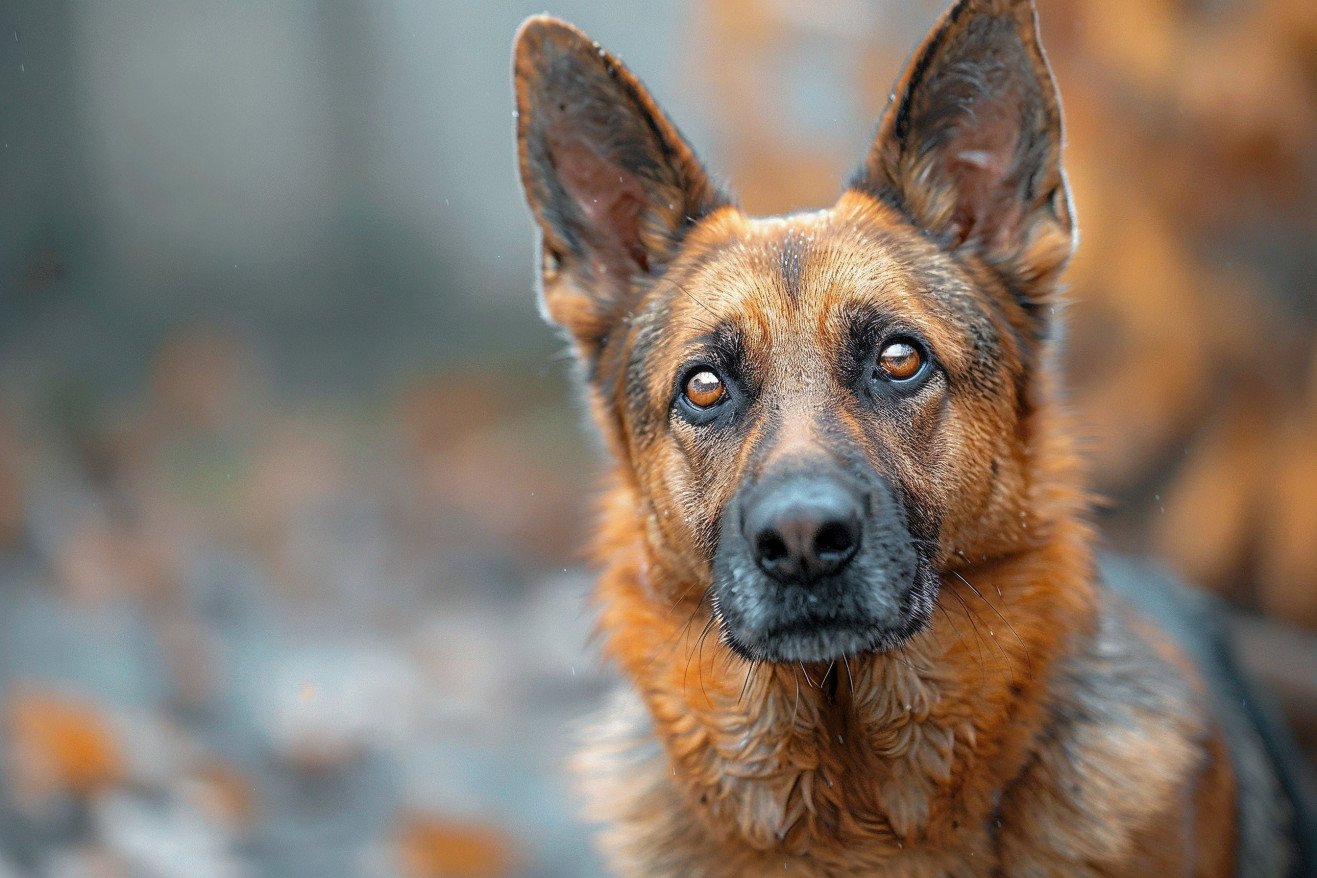Why Is My Dog Acting Scared All of a Sudden? Exploring Causes of Fear and Anxiety
16 April 2024 • Updated 15 April 2024

If your dog is typically outgoing and confident but has recently started acting fearful, there could be an underlying health issue, environmental change, or traumatic experience that's causing the behavior. Dogs often experience sudden changes in behavior due to things like illness, changes in their environment, exposure to loud noises or unfamiliar people/animals, aging, and past experiences that have led to anxiety.
In order to help you figure out what's causing your dog to act scared, we've taken a look at what veterinarians, animal behaviorists, and dog owners have to say about the topic. By doing so, we hope to demystify some of the most common causes and physiological processes behind sudden fear and anxiety in dogs. Armed with this information, you can learn how to spot potential causes, rule out health issues, and use positive reinforcement to help your dog feel more confident and secure.
Why is my dog acting scared all of a sudden?
Fear Periods and Developmental Stages in Puppies
Puppies experience two distinct "fear periods" during their development, according to research referenced by The Wildest. The first fear period happens between 8-11 weeks of age, and the second fear period happens between 6-14 months of age, which is when dogs are in their adolescent phase. During these periods, puppies exhibit an increased fear response to new experiences, people, and objects that they were previously comfortable with. This increased fear and reactivity to unfamiliar stimuli is a normal part of a puppy's emotional and behavioral development.
While these fear periods are temporary and typically last a few weeks (although they can last up to a month or more), it's important to ensure that puppies are properly socialized and trained using positive reinforcement. As PetHub explains, most fears and anxieties that develop in dogs occur during the 12-36 month "social maturity" period. Intervening to address fear reactivity with desensitization and counter-conditioning can help prevent puppy fears from developing into more severe, long-term anxiety disorders.
Therefore, if your adolescent puppy suddenly seems afraid of the neighbor's garbage cans or a door slamming, don't panic. With the right training and a little patience, you can help them get through this developmental phase and build a foundation of confidence that will last a lifetime. Understanding that these fear periods are a normal part of development can help pet parents feel more at ease and focus on helping their puppies.
Medical Reasons for Sudden Fear and Anxiety in Dogs
Sudden changes in behavior, including an increase in fear and anxiety, can be due to medical issues in dogs. According to research by Southeast Veterinary Neurology, some potential medical reasons for sudden changes in behavior include neurological problems such as encephalitis, Chiari-like malformation, stroke, or brain tumors, as well as extreme pain from acute injuries or chronic issues like arthritis.
Signs of these medical problems that could lead to fear and anxiety include seizures, ataxia, loss of vision, paresis, muscle stiffness, tremors, and changes in gait or daily routines. As VCA Animal Hospitals points out, any medical issue that causes an increase in pain or discomfort can lead to an increase in irritability, anxiety, or even aggression in dogs.
It's important to make sure that there are no medical issues at play by working with a veterinarian to get the necessary tests and evaluations before assuming that the fear is behavioral. PetMD notes that early recognition and intervention when it comes to pain can help ensure that a dog's quality of life is preserved. It's only after any medical issues have been addressed that the focus can be on environmental factors and training.
Environmental and Situational Causes of Fear and Anxiety
Sudden changes in a dog's environment, routine, or living situation can lead to fear and anxiety, even in dogs that are typically confident. PetHub notes that some of the most common causes of this type of anxiety include loud noises, unfamiliar people or animals, new environments, and changes to the dog's routine or schedule. In addition, as dogs get older, they may experience a decline in their senses and cognitive function, which can lead to them feeling more overwhelmed and disoriented, and in turn, more anxious and fearful.
According to Dope Dog, dogs are naturally territorial animals, and this can lead to fear and anxiety when they are exposed to new people or environments. This can be the result of a lack of socialization during their critical developmental periods or negative experiences with new people or places. It's important to recognize and address these potential environmental causes in order to help a dog that's experiencing fear and anxiety feel safe and secure in their environment.
How to Desensitize and Calm a Fearful Dog
It is important to know the cause of a dog's fear in order to know how to best help them, and according to expert advice from the American Kennel Club, this can help you develop a plan that will help soothe and desensitize your dog. Some of the most common ways to do this are through desensitization and counterconditioning, both of which are based on positive reinforcement and involve gradually exposing the dog to the source of their fear in a safe and controlled way.
According to information from Cornell University's College of Veterinary Medicine, other things that can help include making sure the dog has a safe space to go to when they are feeling anxious and keeping a consistent routine. In addition, some dogs may benefit from supplements or pheromones that can help them feel more at ease.
If a dog's fear is particularly severe, PetMD notes that a vet may prescribe anti-anxiety medications or natural remedies to help with behavior modification training. However, it is important to make sure that the dog's fear is being treated in a way that is both safe and effective, and that the treatment plan is tailored to the dog's specific needs.
How to Treat Separation Anxiety in Dogs
Separation anxiety is a type of anxiety disorder that is characterized by extreme stress and disruptive behavior when a dog is left alone, according to research from the RSPCA. Symptoms of separation anxiety include pacing, vocalization, destruction, escape attempts, and house soiling.
The most effective way to treat separation anxiety is through a combination of behavior modification methods. PetMD recommends that systematic desensitization and counterconditioning, which involves positive reinforcement and gradually acclimating the dog to being alone, can be helpful. In addition, increasing the dog's physical and mental stimulation before leaving and providing them with toys that offer mental stimulation can help them feel more comfortable when they are alone.
In more severe cases, research from VMRR explains that veterinarians may prescribe anti-anxiety drugs or natural supplements that can be used in combination with behavior modification. The most important thing is to treat the underlying causes of the separation anxiety with a comprehensive, individualized treatment plan.
With the help of these treatments and collaboration with veterinary and training experts, dog owners can help their dogs overcome their separation anxiety and build confidence and a better quality of life.
Conclusion: How to Help Dogs Overcome Fear and Anxiety
There are many reasons why dogs may experience sudden fear and anxiety, including developmental stages, medical issues, environmental changes, and past negative experiences. Recognizing the signs of fear and anxiety, identifying the root cause, and implementing appropriate strategies are crucial for helping a dog regain confidence and emotional well-being.
With patience, consistency, and a tailored approach that addresses the specific needs of the dog, it is possible to overcome fear and anxiety issues and promote a happy, healthy, and secure companion.


